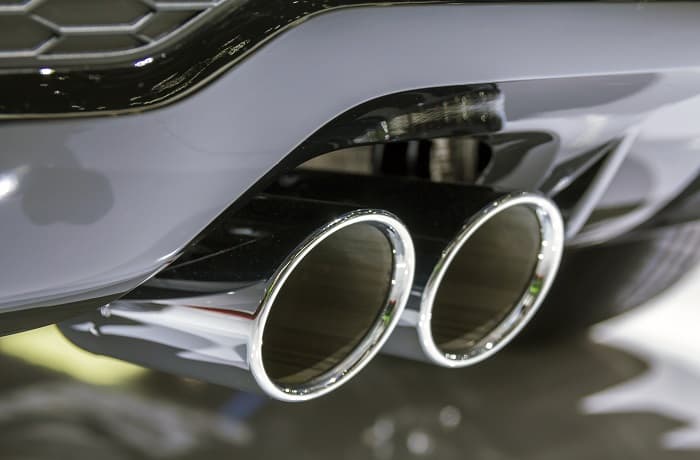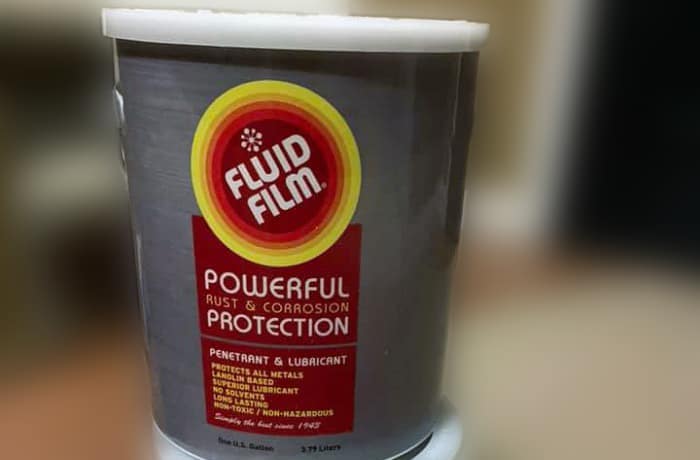If you’re keen on maintaining your vehicle, you’ve likely come across Fluid Film, a popular rust and corrosion inhibitor favorite for many DIY mechanics and professionals.
Fluid Film is typically praised for shielding metal parts from moisture and salt, especially in lower-temperature settings. However, applying Fluid Film to an exhaust system can be tricky.

Table of Contents
Why Fluid Film Isn’t Ideal for Your Exhaust
Fluid Film thrives in environments where it can prevent rust without facing extreme heat—think undercarriages, nuts, bolts, and other metal parts away from the intense heat of an engine’s exhaust system.
The catch with exhaust systems is the high heat they produce; temperatures can quickly soar to over 600°F (315°C). Under these conditions, Fluid Film might not just fall short—it could fail dramatically.
Challenges of Using Fluid Film on Exhaust Systems
When considering Fluid Film for exhaust systems, you must understand the challenges of the high-heat environment. These challenges impact the effectiveness of Fluid Film and its structural integrity and safety when applied in such extreme conditions.
1. Temperature Tolerance
Fluid Film is renowned for its protective qualities in environments where temperatures remain within normal atmospheric ranges. However, it’s not engineered to withstand the high heat associated with vehicle exhaust systems.
The operating temperatures of an exhaust can easily reach upwards of 600°F (315°C), far exceeding the threshold for Fluid Film’s effective use. At these temperatures, the product isn’t just ineffective; it starts to undergo a physical change.
The boiling point of Fluid Film is much lower than the temperatures your exhaust system might reach during regular operation. This discrepancy means that Fluid Film can begin to vaporize upon application to exhaust components.
When a product designed for corrosion protection turns to vapor, it leaves the metal surfaces it was meant to protect exposed to elements that can cause rust and deterioration.
2. Product Degradation
High temperatures challenge the effectiveness of Fluid Film and its chemical stability. Fluid Film begins to break down chemically as temperatures rise, which can lead to several problems.
Loss of Protective Properties
As Fluid Film degrades under high heat, its ability to protect against rust and corrosion diminishes rapidly. When degraded, the product fails to provide a protective barrier, essential for prolonging exhaust components’ life.
This degradation is not slow but happens quickly under high temperatures, reducing the treatment’s effectiveness.
Emission of Fumes or Smoke
Another significant concern with the high-temperature degradation of Fluid Film is the potential emission of fumes or smoke.
These emissions are unpleasant and could be harmful if inhaled, posing a health risk to anyone performing maintenance on the vehicle or near the exhaust system while it’s running.
Also, the smoke and fumes can contribute to environmental pollution, contradicting the eco-friendly intentions behind using such products.
Potential Risks of Applying Fluid Film to Exhaust Systems
Using Fluid Film on exhaust components introduces several risks, primarily due to its ineffectiveness at high temperatures and potential safety concerns. Understanding these risks is crucial for vehicle owners considering Fluid Film for exhaust protection.
1. Ineffectiveness on Hot Surfaces
The primary issue with applying Fluid Film to an exhaust system is its ineffectiveness when subjected to the high temperatures typical in such environments.
Upon application, Fluid Film is likely to burn off quickly due to the intense heat of the exhaust system. When the exhaust system heats up, this burn-off occurs almost immediately upon the vehicle’s operation.
The rapid loss of the protective coating means that the exhaust parts are left unprotected against corrosion and rust, essentially rendering the application of Fluid Film pointless.
2. Safety Concerns
Beyond the lack of protective benefits, using Fluid Film on an exhaust system raises significant safety issues. These concerns primarily stem from the nature of the product and the environment where it’s applied.
Fire Hazard Potential
Applying an oil-based product like Fluid Film to extremely hot surfaces, such as an exhaust system, could cause fire hazards.
Suppose the product does not completely burn off and accumulates over time. In that case, it can ignite under certain conditions, posing a risk to the vehicle, its occupants, and its surroundings.
This risk is particularly concerning because it may not be immediately evident until a problem arises.
Health Risks from Fumes
As mentioned earlier, the degradation of Fluid Film at high temperatures can lead to the emission of fumes or smoke. These emissions are not only unpleasant but potentially harmful.
Inhaling these fumes can pose health risks, particularly in confined spaces such as garages or workshops, where ventilation might be inadequate.
Moreover, chronic exposure to such emissions could have long-term health effects, making it unsuitable for exhaust system protection.

Alternative Solutions for Protecting Exhaust Systems
Considering the challenges and risks of using Fluid Film on exhaust systems, exploring alternative solutions designed to withstand high temperatures and provide adequate protection is essential. Here are some viable alternatives to consider:
1. High-Temperature Coatings
High-temperature coatings offer an ideal alternative for those seeking a durable solution that can handle the extreme heat of exhaust systems.
Ceramic Coatings
Ceramic coatings are one of the most popular choices for protecting exhaust systems. These coatings are designed to withstand very high temperatures — often up to 2000°F (1093°C) — making them perfect for application on exhaust manifolds, headers, and pipes.
Besides their heat resistance, ceramic coatings provide a hard, protective layer that helps prevent rust and reduces the thermal radiation emitted by exhaust components.
This reduction protects the exhaust and can help slightly improve the vehicle’s performance by keeping the exhaust gases hotter and, therefore, more efficient.
High-Temperature Exhaust Paints
Another effective alternative is high-temperature exhaust paint. These specially formulated paints can resist temperatures of up to 1200°F (648°C) and are available in spray cans for easy application.
Like ceramic coatings, these paints help protect against corrosion and can withstand the expansion and contraction of exhaust components caused by extreme heat cycles.
Available in various colors, they also offer an opportunity to enhance the aesthetic appearance of the exhaust system.
2. Exhaust Wrap
Exhaust wrap is a highly effective alternative to high-temperature coatings. It is made from heat-resistant materials like fiberglass or ceramic fiber, which can withstand direct heat up to 2000°F (1093°C).
Wrapping exhaust pipes helps insulate them, reducing the surface temperature significantly. This reduction has multiple benefits:
• Decreased Heat Transfer: By lowering the surface temperature of the exhaust pipes, the wrap helps protect nearby sensitive components from heat damage.
• Moisture Protection: Insulating the exhaust components also reduces moisture condensation, a common cause of rust on colder exhaust parts.
• Performance Improvement: Keeping the exhaust gases hotter within the system can improve exhaust flow dynamics due to increased thermal efficiency, potentially boosting performance.
Conclusion
Maintaining your vehicle’s exhaust system is critical to ensuring it runs smoothly and efficiently. While Fluid Film offers excellent protection against corrosion in many parts of a car, it’s not suitable for high-temperature environments like exhaust systems due to its inability to withstand extreme heat and potential safety risks.
Instead, high-temperature coatings or exhaust wraps can provide the necessary protection and enhance your vehicle’s performance.
Regular inspections and proper maintenance are essential to keep your exhaust system in top condition and prevent costly repairs.
By choosing the right products and following best practices, you can extend the life of your exhaust system and keep your vehicle running safely and effectively.
